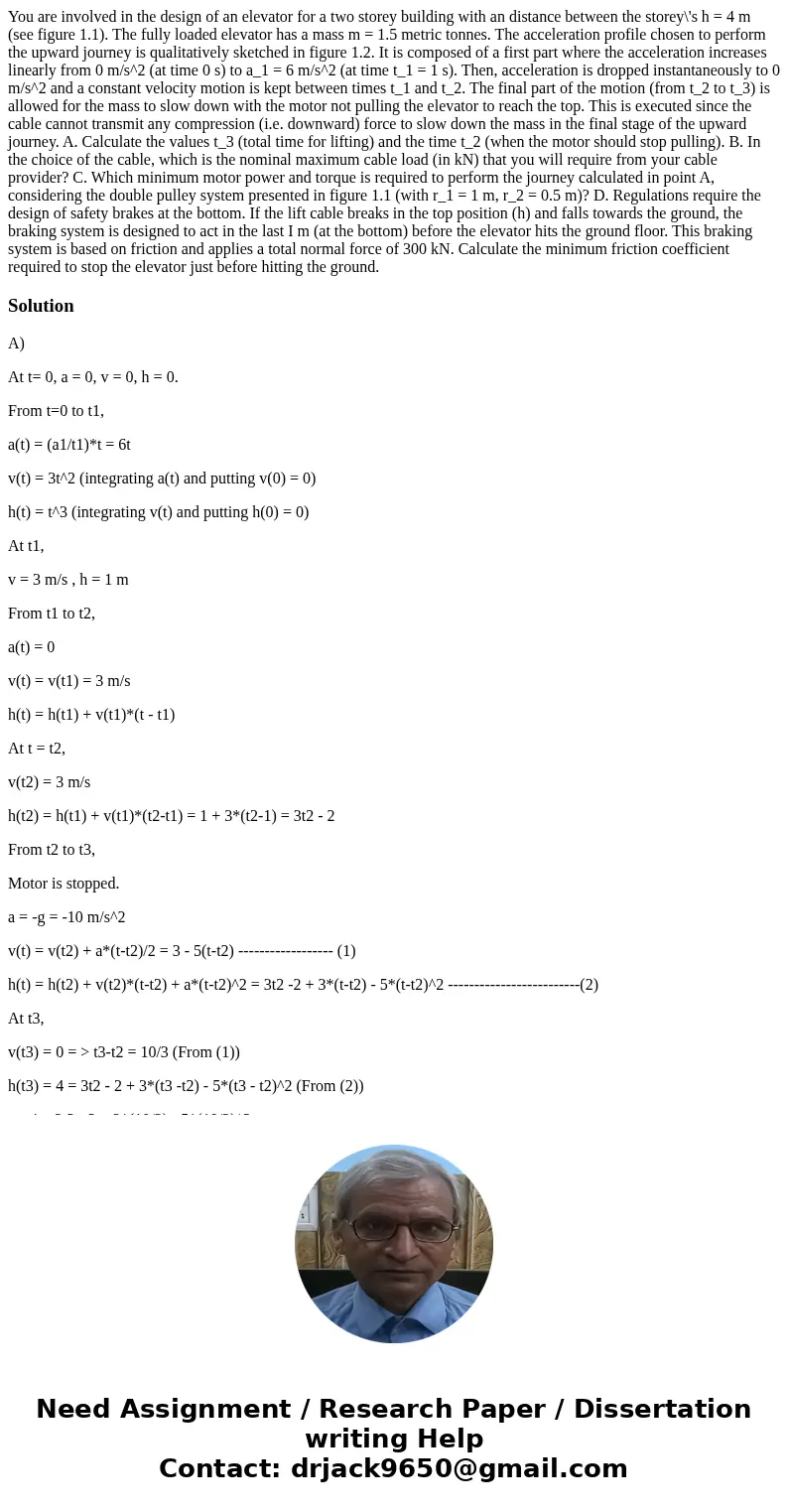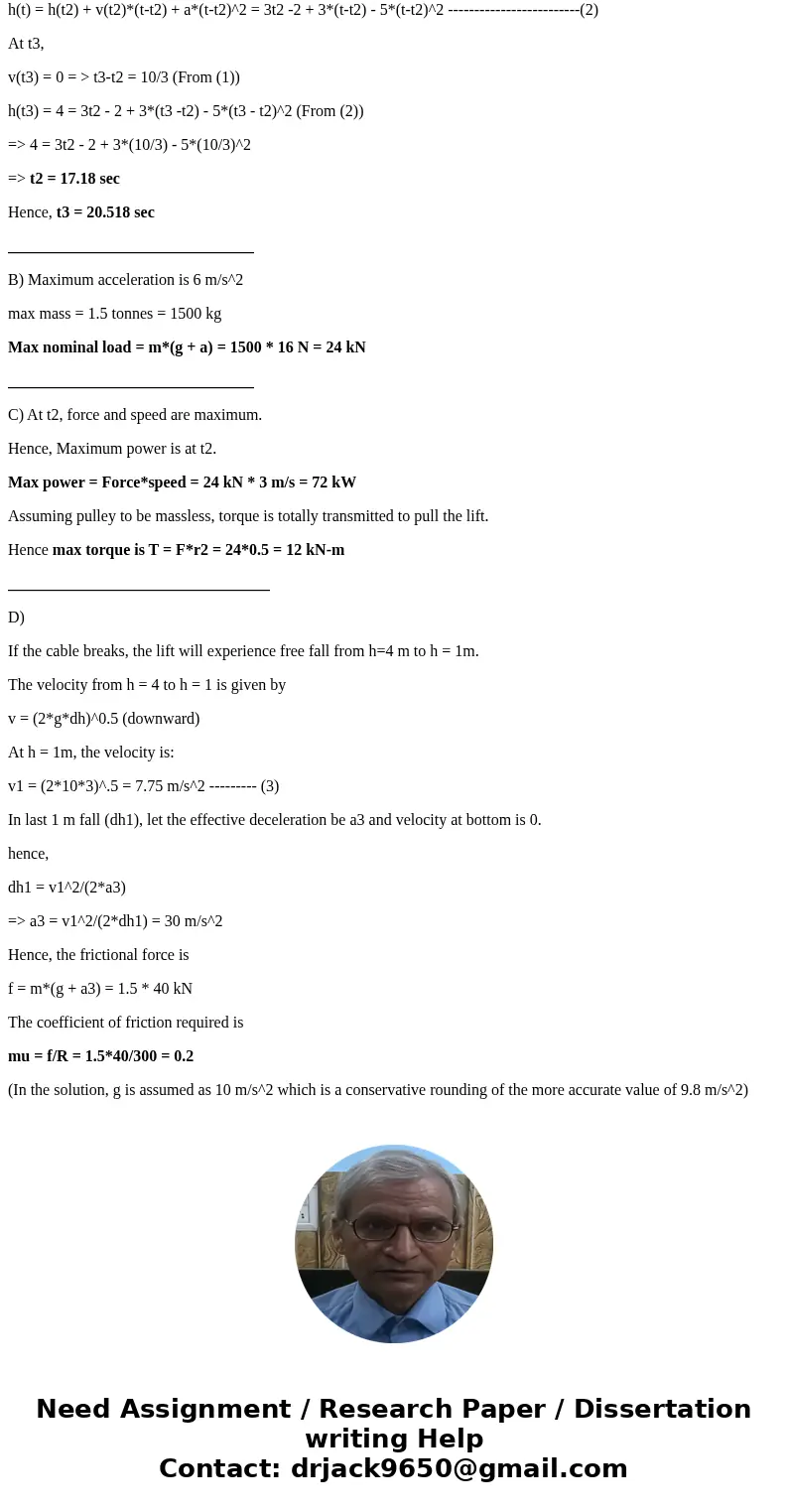You are involved in the design of an elevator for a two stor
Solution
A)
At t= 0, a = 0, v = 0, h = 0.
From t=0 to t1,
a(t) = (a1/t1)*t = 6t
v(t) = 3t^2 (integrating a(t) and putting v(0) = 0)
h(t) = t^3 (integrating v(t) and putting h(0) = 0)
At t1,
v = 3 m/s , h = 1 m
From t1 to t2,
a(t) = 0
v(t) = v(t1) = 3 m/s
h(t) = h(t1) + v(t1)*(t - t1)
At t = t2,
v(t2) = 3 m/s
h(t2) = h(t1) + v(t1)*(t2-t1) = 1 + 3*(t2-1) = 3t2 - 2
From t2 to t3,
Motor is stopped.
a = -g = -10 m/s^2
v(t) = v(t2) + a*(t-t2)/2 = 3 - 5(t-t2) ------------------ (1)
h(t) = h(t2) + v(t2)*(t-t2) + a*(t-t2)^2 = 3t2 -2 + 3*(t-t2) - 5*(t-t2)^2 -------------------------(2)
At t3,
v(t3) = 0 = > t3-t2 = 10/3 (From (1))
h(t3) = 4 = 3t2 - 2 + 3*(t3 -t2) - 5*(t3 - t2)^2 (From (2))
=> 4 = 3t2 - 2 + 3*(10/3) - 5*(10/3)^2
=> t2 = 17.18 sec
Hence, t3 = 20.518 sec
_______________________________
B) Maximum acceleration is 6 m/s^2
max mass = 1.5 tonnes = 1500 kg
Max nominal load = m*(g + a) = 1500 * 16 N = 24 kN
_______________________________
C) At t2, force and speed are maximum.
Hence, Maximum power is at t2.
Max power = Force*speed = 24 kN * 3 m/s = 72 kW
Assuming pulley to be massless, torque is totally transmitted to pull the lift.
Hence max torque is T = F*r2 = 24*0.5 = 12 kN-m
_________________________________
D)
If the cable breaks, the lift will experience free fall from h=4 m to h = 1m.
The velocity from h = 4 to h = 1 is given by
v = (2*g*dh)^0.5 (downward)
At h = 1m, the velocity is:
v1 = (2*10*3)^.5 = 7.75 m/s^2 --------- (3)
In last 1 m fall (dh1), let the effective deceleration be a3 and velocity at bottom is 0.
hence,
dh1 = v1^2/(2*a3)
=> a3 = v1^2/(2*dh1) = 30 m/s^2
Hence, the frictional force is
f = m*(g + a3) = 1.5 * 40 kN
The coefficient of friction required is
mu = f/R = 1.5*40/300 = 0.2
(In the solution, g is assumed as 10 m/s^2 which is a conservative rounding of the more accurate value of 9.8 m/s^2)


 Homework Sourse
Homework Sourse